Journey into unseen Burma: Peter Popham and photographer Chris Steele-Perkins are among first outsiders to visit Chin State for 50 years
A century ago, the people of Chin State, in the Burmese mountains, were fearsome hunters, known to decorate their huts with the heads of their enemies. Then, Baptist missionaries turned them into Christians – and they've lived, ever since, in towns straight out of the US frontier, marooned in a largely Buddhist land
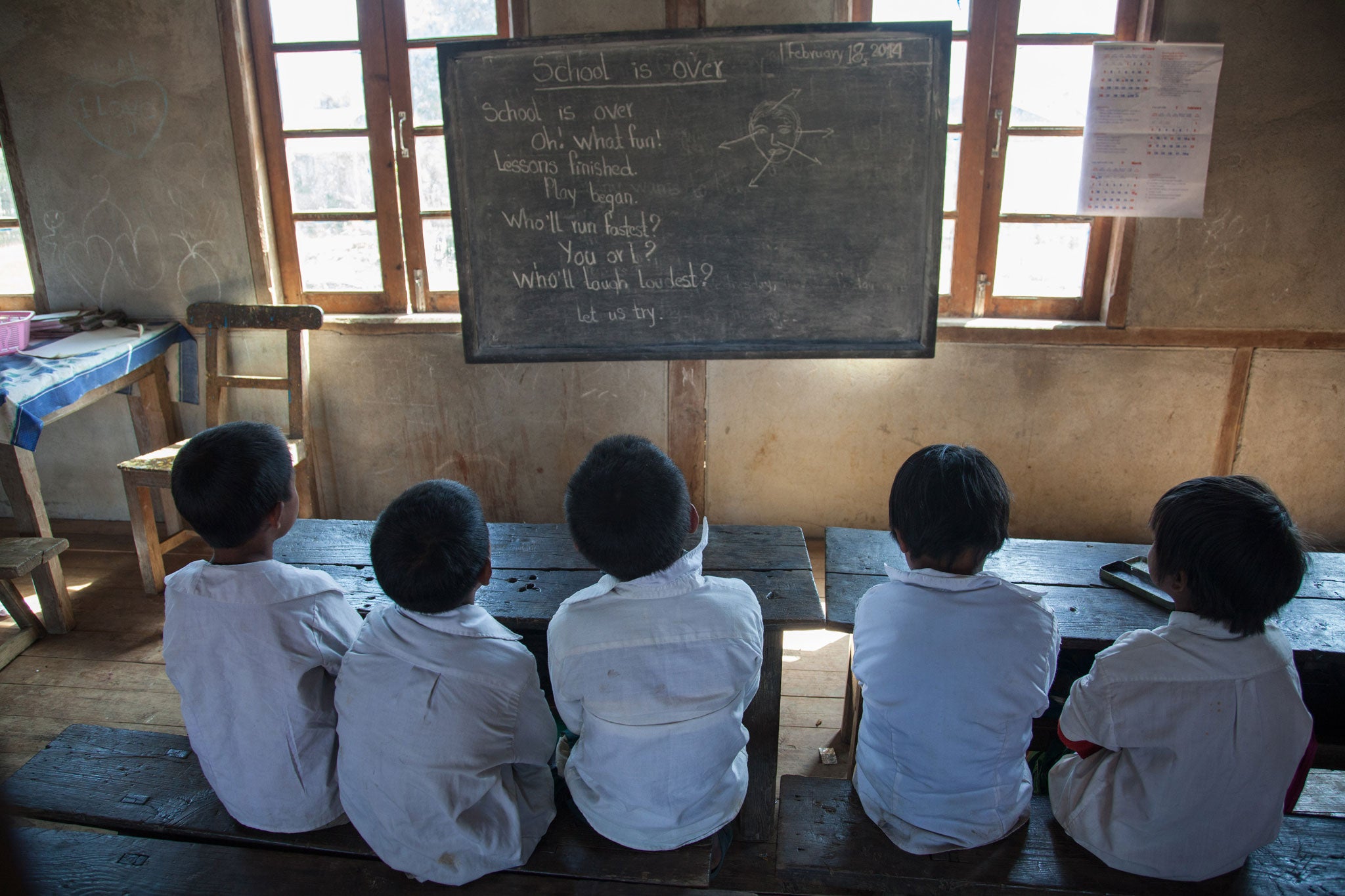
The place we are heading to is one of the wildest and least-known corners of south-east Asia. Chin State, high in the mountains between Burma and India, is home to the eponymous Chin, wild mountain men who for centuries hung their huts with their enemies' heads, sacrificed animals to evil spirits, worshipped a Supreme Being called Khawzing, and raided lowland Burman villages to steal babies to be raised as slaves.
For centuries, the Chin shared the country that came to be known as Burma with the dominant Burmans in the plains, as well as with dozens of other minorities that made their homes in the mountains that fringe the lowlands. The Chins' legends reveal that they were in no doubt of their humble status in the Burmese scheme of things, brought about by lowland cunning.
All the world's races, goes their creation story, were born from 101 eggs; the Chin were born from the last egg of all, and as a result were the most beloved of their parents. But by the time they emerged, all the desirable parts of the world had already been apportioned out; all that was left for them was the mountains. Additionally, the Burmese man who was supposed to be their guardian cheated them out of the possession of elephants – a Burmese symbol of royalty; and when the time came for lessons in reading and writing, he cheated them again by showing them only the blank side of the slate, so they never learnt a single letter.
Today, the Chin have left their savage past long behind, and thanks to Christian missionaries, they are also literate. But in the process, they have been deposited in a kind of ethnic limbo: Christians in an overwhelmingly Buddhist land, Burmese citizens who feel neither Burmese nor anything else. A century ago, they were unrivalled hunters in the dense forests through which they wandered; today, the hills are denuded, the tigers and bears and deer are long gone; hunters with locally-made guns still march out into what remains of the woods, but the odd wild pig is the best they can hope to bring home. And the plight of the Chin is that of those hunters writ large: locked in a land which is as much their prison as their paradise.
The photographer Chris Steele-Perkins and I left Mandalay at four in the morning, heading west and climbing up into the Sagaing Hills, leaving in our wake the great tail of temples, monasteries, convents and gold-plated stupas that bejewel the heartland of Buddhist Burma. The fine four-lane road shrank to two lanes as we passed mountains of slag left by copper refineries to right and left, then further to one-and-a-half as the Nissan 4x4, the right sort of car for the job, clambered higher and higher into the mountains, the broad, high, wild marches on Burma's far west. And we drove and we drove and we drove.
We passed road-building gangs, women scarfed and cowled breaking big stones into smaller ones under the eyes of the young gang master, always a man; we came through villages that were no more than a couple of dozen flimsy wooden houses, clinging to the narrow verge on either side of the ribbon of road, the clapboard church with its cross on a headland protruding above the roofs. In one of those teetering hamlets, we stopped to greet a convoy of Toyotas and Jeeps with luggage piled on the roof and flags of the now-pacified and legal Chin National Liberation Front – two hornbills on a branch on a blue-and-red-striped background – strapped to the bumper.
Night fell and still we climbed; the cough I had been nursing since London was getting worse and the temperature was dropping. Finally, at 7pm, after 15 hours on the road, the driver told us we had arrived in Hakha, Chin State's largest town. We were more than 6,000 feet above sea level; we had left tropical, sea-level Mandalay, where during the first weeks of February the sun blazed down more fiercely every day as summer began tuning up; now it was a couple of degrees above freezing and pouring with rain. We stumbled from the car into the Grace Hotel, where we learnt we were booked into an annex with neither heating nor hot water. I had a panicky feeling that I was going to get pneumonia and die here, that my bones would be buried in the soil of Chin.
Chin State is one of the last corners of Burma to be opened to foreigners, and we were among the first non-Burmese to reach here, as the shy smiles and curious glances we got everywhere we went made plain. Given the rigours of the journey and the Spartan character of the hotel – and the fact that this large state has no airport – I would hesitate to predict that large numbers will be following us in.
At the hotel, as the rain teemed down, we met our fixers, two young guys called Sang and Mang, who took us 20 paces up a steep hill sluicing with rain water to a cosy eating house where we ate fried rice and a fabulously rich dish of fish-head soup washed down with Myanmar Beer. I began to revive, and fears of imminent death and burial receded. The hotel did indeed have no heating – and no electricity after 10pm, when the generator shut down – but the duvets were thick and plentiful and I rose in the morning to face another day. And I found myself in a town unlike any in the world – and quite unlike anything I had ever seen in Burma.
The steep main street was lined with clapboard buildings painted lurid shades of yellow, pink and sky-blue, but if you were to see a monochrome photograph you would not be surprised to learn that it had been shot on the frontier of the American Wild West, circa 1860. I did not see any bars with swinging doors, nor any horses tied up outside them, and even cowboy hats were in short supply; had these details been present, however, the illusion would have been complete.
We are among the first foreigners to travel to Burma's Chin State in more than half a century. And yet there is a strong sense that we have got here too late. What we see – this American frontier town – covers up what this land once was, erasing it so completely that we can only guess what it was like before. And to make it even more confusing, this cowboy town is populated by a short, stocky, coffee-coloured race who might be mistaken for Red Indians.
In lowland Burma, everywhere you go the past is with you. The city of Bagan may be only a shadow of the metropolis it once was, but the thousand pagodas tell their story of medieval wealth and Buddhist zeal. Shwedagon pagoda in Rangoon is encrusted with modern additions – escalators, souvenir shops, even an ATM – but at its heart is a pilgrimage site that has stood here for a thousand years.

But the biggest town in Chin state is like a stage set for a production of Annie Get Your Gun. If they were to haul up the backdrop and pack away the flats, what would remain?
The founding parents of modern Hakha were Arthur and Laura Carson, American Baptist missionaries from the Midwest who had already evangelised for years down in Burmese lowlands. Then, in 1899, they were ready for a more serious challenge, among the Chins of the hills who had never encountered the Bible.
They began their journey up the Irrawaddy River in a steamer, the Karanee, which "towed two flats, one on either side, each of which was loaded with ngapi (putrid fish) which is largely used as food by the people of this country," Mrs Carson wrote in her memoirs. "The night was hot and the fumes from the fish made me very sick all night so that I could not sleep."
After a six-week journey through jungles full of tiger and wildcat and up steep, narrow paths where trains of pack cattle almost shouldered them over the edge into the abyss, they finally arrived in Hakha, "a military post where are stationed 60 Sepoys with three English officers".
Why here? "Chin villages abound on the neighbouring hillsides," Laura Carson recorded. "Many thousands of people are accessible from this place, not one of whom is a Christian and not one can read or write in any language. Their only religion is the sacrificing of animals to evil spirits; it is also their only system of medicine. To these poor people we hope to introduce the everlasting, uplifting influence of the Gospel of Christ and teach them the Way of Salvation."
But on that first day and night, Laura Carson quailed at the scale of the challenge. They had arrived, as she wrote, "beyond the pale of civilisation", among wild tribesmen whose huts had been decorated with the heads of their (human) victims and whose main pastime was raiding Burman villages in the plains and carrying off their babies to be reared as slaves. After a succession of small wars, the British forced them to give up these barbaric customs, but they remained who they were – a people whose story had, from its murky beginnings, been lived a very long way from anything that resembled civilisation.
But the next day something occurred which made her change her mind. She was paying off the Chin who had brought them up into the hills when it happened. "One girl about 18 was unusually attractive. I had tried ... to make friends with her on the way up … Her perfect figure was clad in a skirt not more than 18 inches long – that was all. With a beaming face she came to me to say goodbye, patting my face with a very grimy hand and smiling into my eyes ... I realised that Drummond was right when he said, Love is the greatest thing in the world. It is. I saw beyond the grime and filth on that perfectly formed and almost nude body. I saw the need of the soul ... What could not a consecrated Christian woman > do for her and those of her kind if she would? What a matchless opportunity had been given me!"
Seven years later, in 1906, the Carsons made their first convert. Two years after that – shortly before expiring from appendicitis – Arthur Carson baptised number one hundred. This pioneering, inexhaustible couple had learnt the language, written it down in the Roman alphabet, taught their converts to read and write, and had translated several books of the Bible, including the Gospel according to Matthew and the Acts of the Apostles, into Chin and had them published.
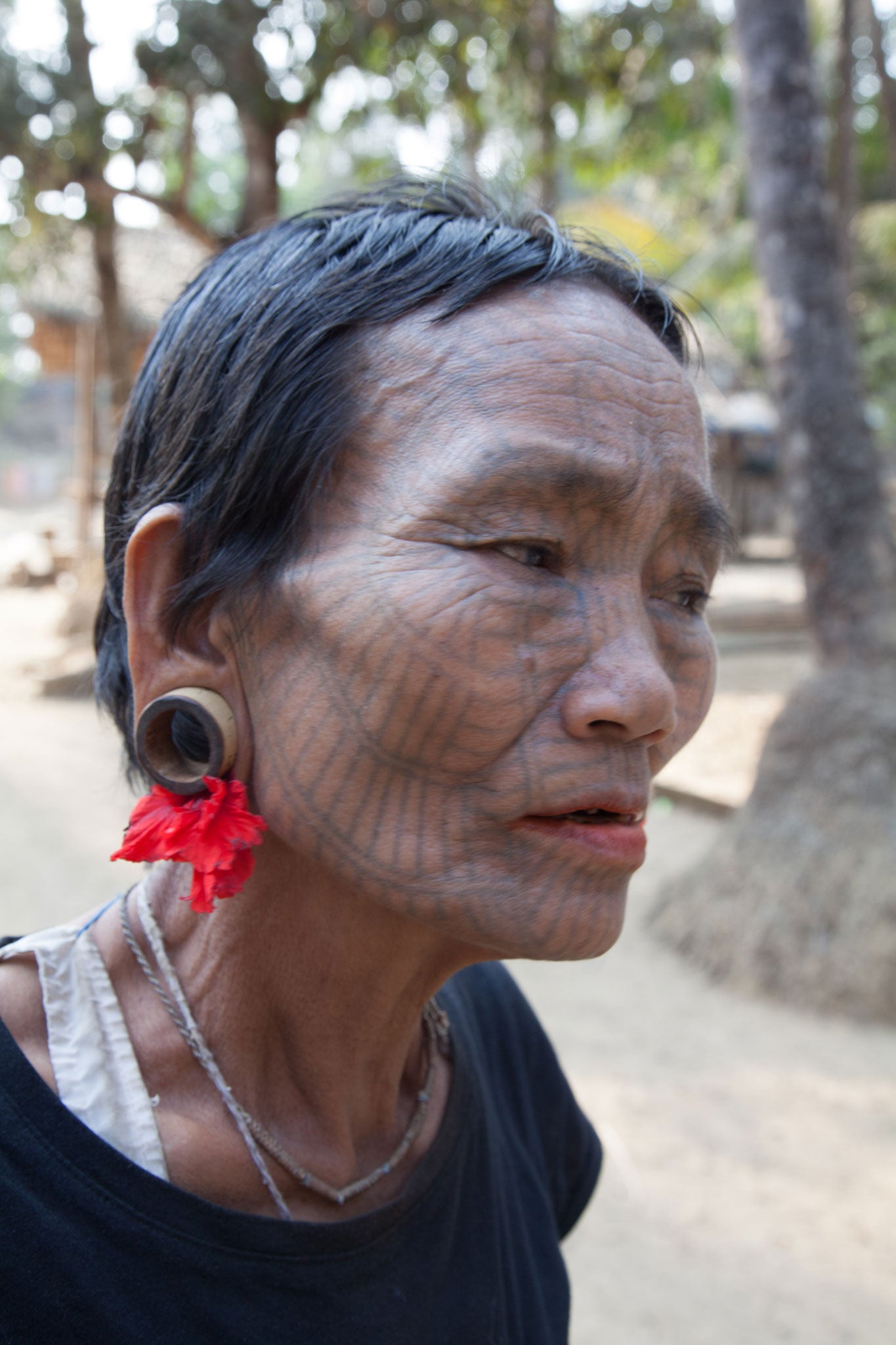
They had brought influential young chiefs over to their side, proved native fears about evil spirits and cursed fields to be bunkum, and with the discreet assistance of officers of the British Raj, had shown the most promising young Chin that this alien faith could work wonders: could raise them in the eyes of the people who now commanded their land, and allow them to hold their heads high in the presence of the lowland Burmans who had always despised them. Today, because of the seeds planted a century ago by Arthur and Laura Carson, Chin State is overwhelmingly Christian.
And as a result of all that, the earlier reality – the head-hunting, the slave-raids, the animal sacrifices – is completely inaccessible. It's as if it had never existed.
Perhaps in the process of becoming 'civilised', the Chin have lost something far more precious. They have lost the sense of who they are.
By turning them into wannabe whites, with their clapboard homes and homely churches, their sweaters and jackets and trousers, they have alienated them from everything that made them what they once were.
The last American missionary in Chin State left in 1966. That was four years after the coup d'état that brought General Ne Win to power. Everything in Burma that was tainted, in Ne Win's view, by a 'foreign' connection, had to go, from the Ford Foundation to the American Baptists who ministered to the Chin. Burma was locked up inside its borders.
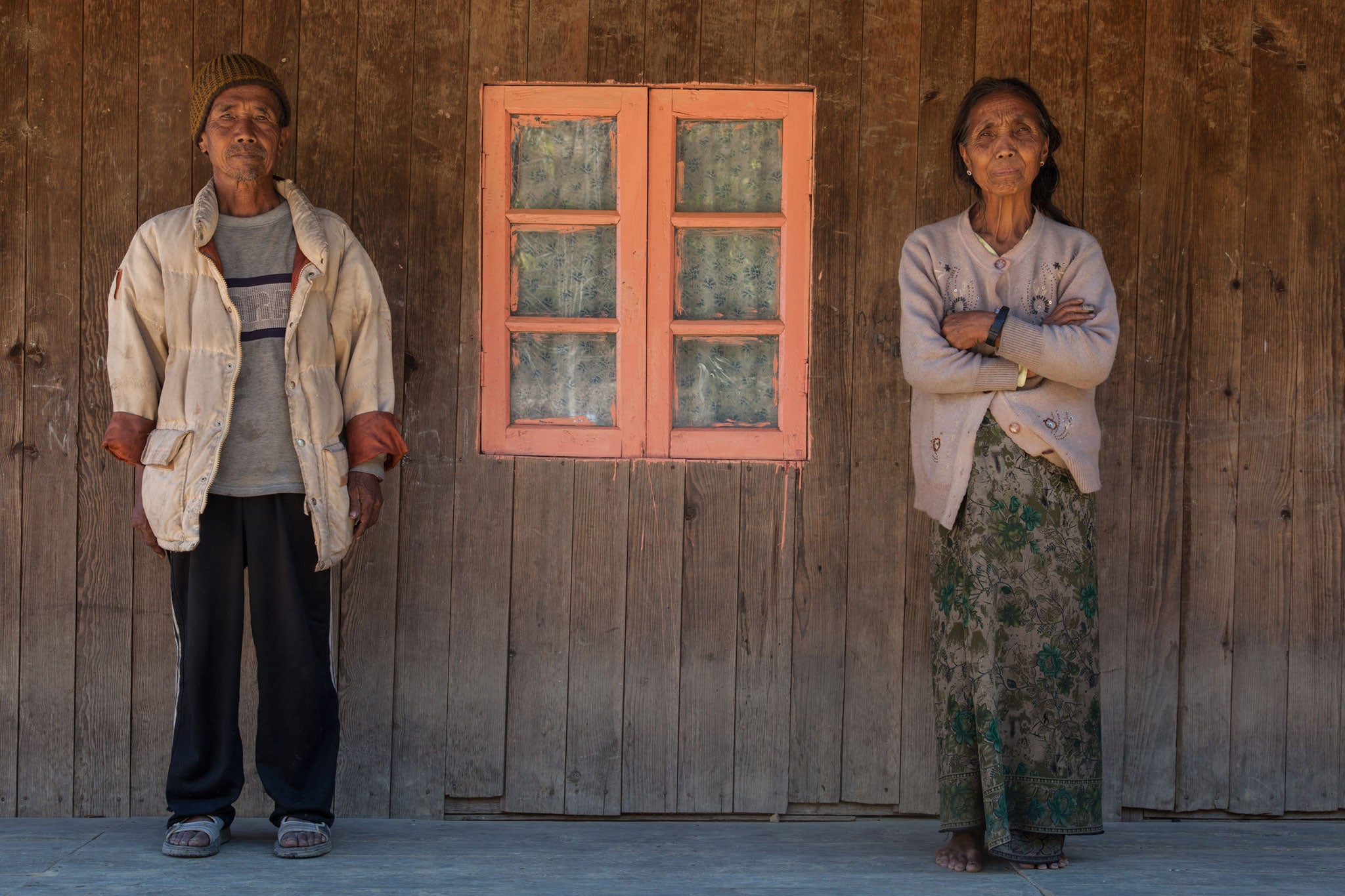
The country which at independence was seen as the best hope in south-east Asia for achieving stability and prosperity – fancied far higher than Thailand, for example – began its slow slide backwards, under the cranky rubric of Ne Win's 'Burmese Way of Socialism'. By 1988, the Burmese government had applied for, and been granted, Least Developed Nation status, putting it in the same sad basket as Eritrea and Liberia.
The Ne Win years had not been too bad for Chin State: like the rest of the country it had stagnated, but unlike Karen State on the east of the country, it had not been regarded as dangerously disloyal. There were rebellions, there was a Chin Liberation Front, but it was all low-key stuff compared to much of the rest of Burma, which was in a state of more or less continuous civil war. But with the expulsion of the foreign missionaries, the Chin lost touch with the wellspring of their new faith. Now they were doubly estranged from all that surrounded them, from everything that they were.
Then came 1988. The uprisings of that year, sparked by the regime's reckless decision to demonetise much of the currency, racked these hills too, and were followed by the same harsh retribution as elsewhere: the heavy hand of SLORC – the State Law and Order Restoration Council – descended. Decades of isolation and decline were now compounded by a flood of the able-bodied and ambitious into exile.
"About 40 per cent of the people left after 1988," our fixer, Sang Hnin Lian, told me. "They went to Malaysia, the US, Australia, Germany, Denmark, Norway, they found work and sent remittances back. Now," – since the reforms started two years ago – "people have started to come back. But not many. And none to this village yet."
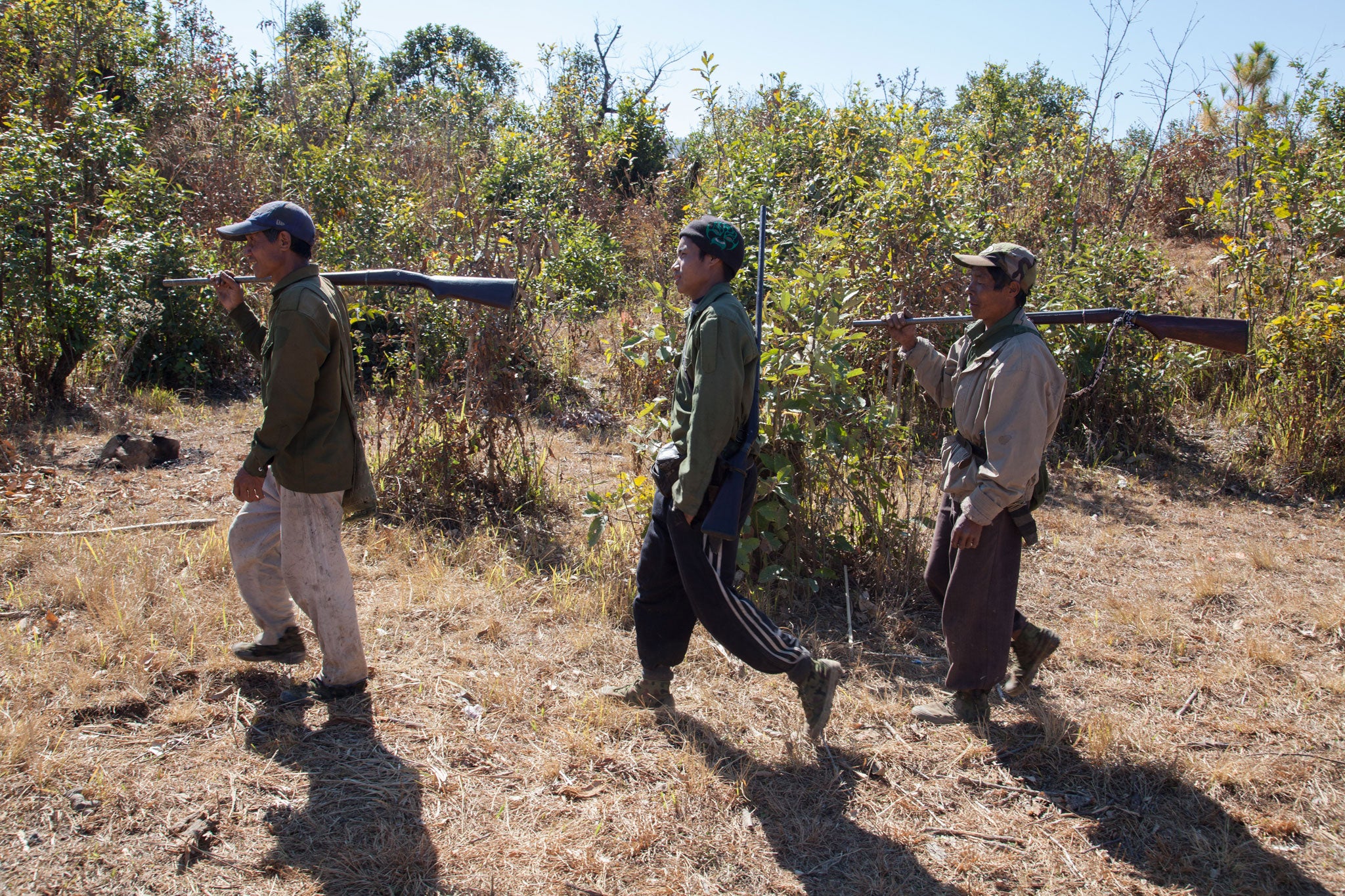
We are in the village of Nabual, a couple of miles from Hakha, reached by a rough single-track road; 'Warmly welcome to NABUAL' says the sign in English, in tender expectation, finally fulfilled, of someone able to understand it.
And once we are in the village, suddenly Chin's limbo doesn't seem too bad a place to be.
The loudest noise in this village of 50 houses is the shuttle of a small wooden loom being whacked against the wood of the frame by a pretty teenage girl in her long Chin skirt. Her knees are tucked under her as she weaves away on her sunny balcony, while a tiny kitten washes its face. It takes one month to make the material for a skirt, she says.
The simple wooden village school has three classes and 18 pupils. Five of them are studying English, chanting the rhyme chalked up on the board:
'School is over, oh what fun!
Lessons finished, play begun
Who'll run faster, you or I?
Who'll laugh louder, let us try!'
Stop right here, one wants to say: this is all the development you need. In this village clinging to a steep hillside, the tranquillity is profound: there are no cars, no trucks, a rough ribbon of road that is just barely motorable. The state provides a fitful, meagre supply of electricity, but its meagreness doesn't matter much: in Laura Carson's day the Chin used to, in her words, "go to bed with the chickens" for fear of the evil spirits abroad at night. Today, the superstitions may have receded but the habit remains.
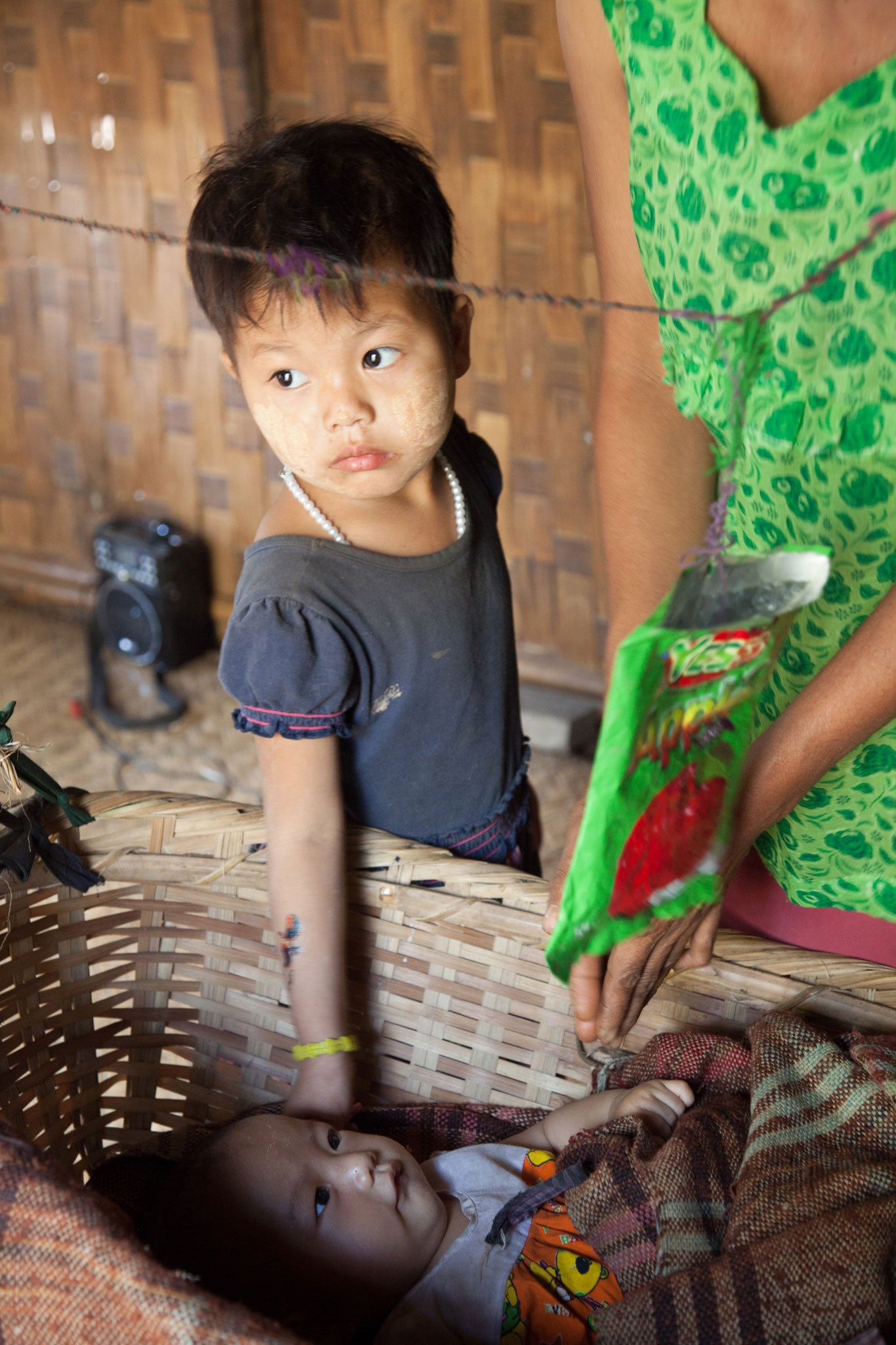
The modern world has not yet twisted the Chin way of life out of shape. There are a few telephones, and microwave coverage enough to justify ownership of that new status symbol, a smart phone; there are also a few motor scooters. But there are no buildings made of anything but wood, and none higher than two storeys. On small plots adjoining their homes the villagers grow yams, beans, bananas and sugar cane. One man weaves the handsome cane baskets the Chin use for their shopping.
We are introduced to the old ladies of the village, Dawt Pen, aged 76, and Ni Kil, aged 78. They are tiny even by the diminutive standards of the Chin. I ask them if they remember the Second World War. They certainly do. "The Japanese came to the village, they shot and cooked and ate our pigs and cows," Dawt Pen says. "There were airplanes, too – it was terrifying. We ran into the country with our parents to hide from them. We got so hungry."
That was in 1943. Two years later, the pendulum swung back the other way, and the British who had first rampaged through in the 1890s were back again. Peace returned. Independence brought few changes. General Aung San was assassinated, and his promise of federalism came to nothing. Unexploded Japanese bombs were dug up, defused and beaten into bells for the churches. Chin State slipped back into the obscurity that seems its natural state: "...the world forgetting, by the world forgot...".
In Nabual, the small plum trees are in blossom, the cocks are crowing in the middle of the afternoon, the cats and dogs, loved and well treated as is rarely the case in Asia, seem as contented as the chickens and the people. In the tranquil spring sunshine, the rest of the world seems a very long way away.
Join our commenting forum
Join thought-provoking conversations, follow other Independent readers and see their replies
Comments